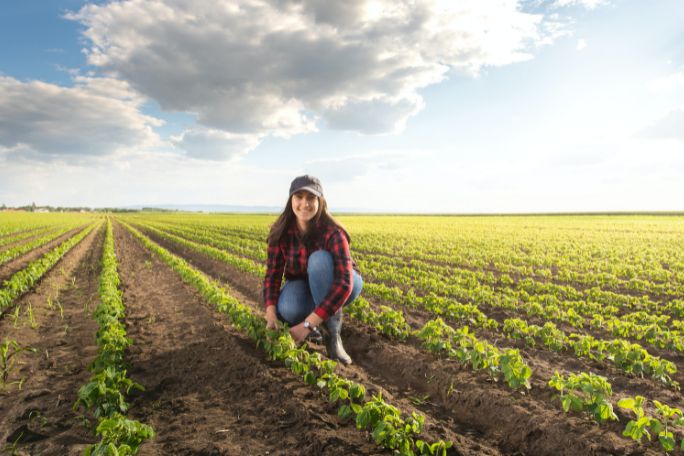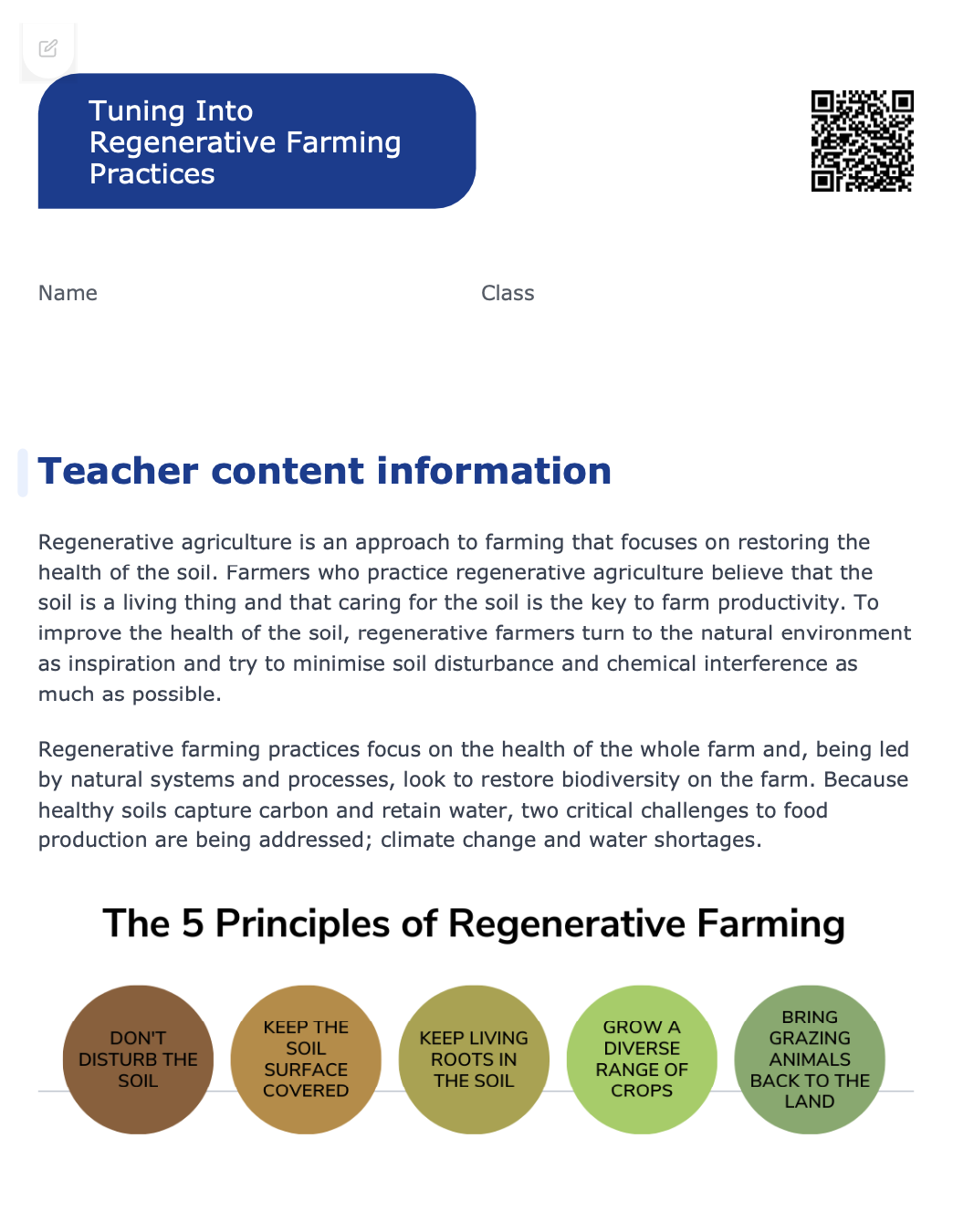Lesson summary
Students will explore what regenerative agriculture is and how it works. Students will create TikTok-style videos to explain the differences between various agricultural practices.
Learning intentions:
Students will...
- understand what regenerative agriculture is and its 5 principles
- explore the differences between different agricultural practices, such as traditional, permaculture, organics, intensive farming and regenerative farming
- discover how different principles might assist crop production, soil health and sustainability in the future.
Success criteria:
Students can...
- describe the features of and differences between different agricultural practices
Lesson guides and printables
Curriculum links
Select your curriculum from the options below.
Lesson details
Skills
This lesson is designed to build students’ competencies in the following skills:
- collaboration
- communication
- creativity
- digital literacy
Curriculum Mapping
Australian Curriculum (v9.0) content descriptions - Geography Year 9
Students learn to:
- understand the challenges to sustainable food production and food security in Australia and appropriate management strategies (AC9HG9K04)
- understand the environmental, economic and technological factors that impact agricultural productivity, in Australia and a country in Asia (AC9HG9K03)
General capabilities: Literacy, Critical and Creative Thinking
Cross-curriculum priority: Sustainability.
Relevant parts of Year 9 Geography achievement standards:
Students analyse the interconnections between people and places and environments. Students analyse strategies to address a geographical phenomenon or challenge using environmental, social or economic criteria.
UN Sustainable Development Goals
Target 2.4: By 2030, ensure sustainable food production systems and implement resilient agricultural practices that increase productivity and production, that help maintain ecosystems, that strengthen capacity for adaptation to climate change, extreme weather, drought, flooding and other disasters and that progressively improve land and soil quality
Target 15.3: By 2030, combat desertification, restore degraded land and soil, including land affected by desertification, drought and floods, and strive to achieve a land degradation-neutral world
Resources Required
- Internet access
- Laptop
- Screen (for viewing videos)
- Student Worksheet - one for each student
Additional Info
Level of teacher scaffolding: Low - teacher will need to oversee students as they work through the lesson and support assisted students as required.
Special thanks to:

This lesson has been developed with the support of the Macdoch Foundation.
This lesson includes video content of the brilliant new feature documentary from WildBear Entertainment, New Town Films and Regen Studios - go to Rachel’s Farm to see the entire film.
Cool's curriculum team continually reviews and refines our resources to be in line with changes to the Australian Curriculum.




Welcome back!
Don't have an account yet?
Log in with:
Create your free Cool.org account.
Many of our resources are free, with an option to upgrade to Cool+ for premium content.
Already have an account?
Sign up with:
By signing up you accept Cool.org's Terms and Conditions(Opens in new tab) and Privacy Policy(Opens in new tab).